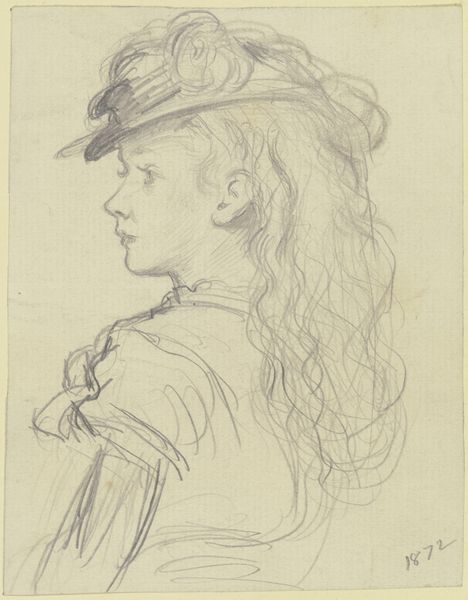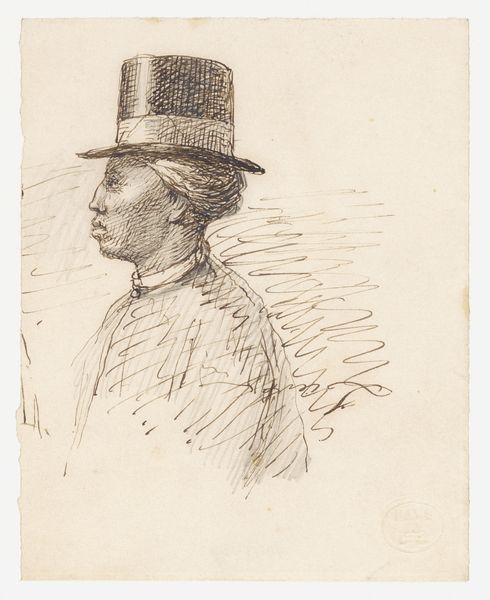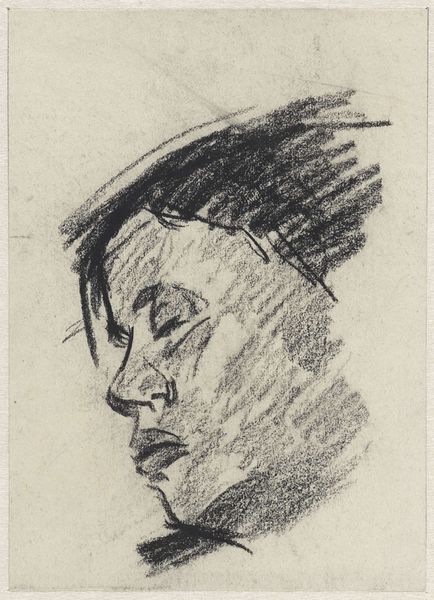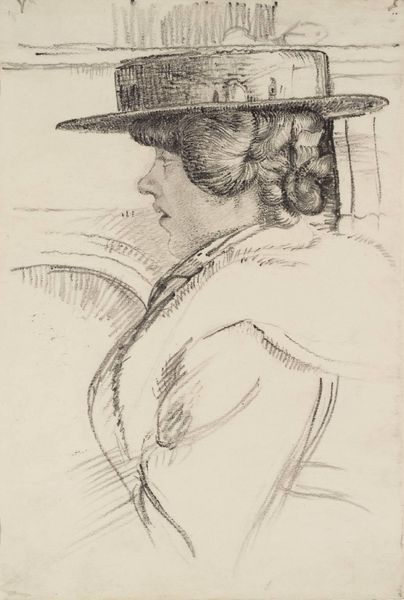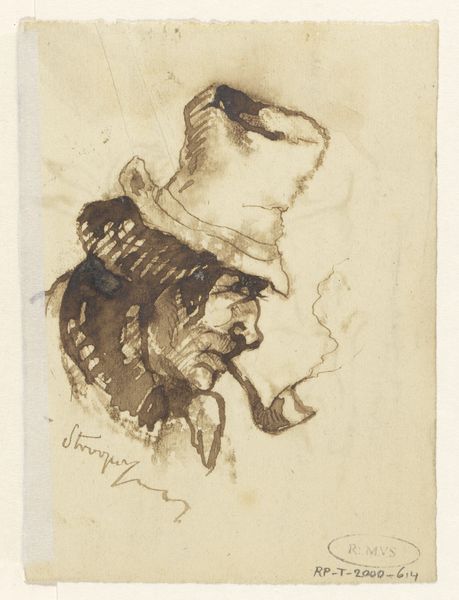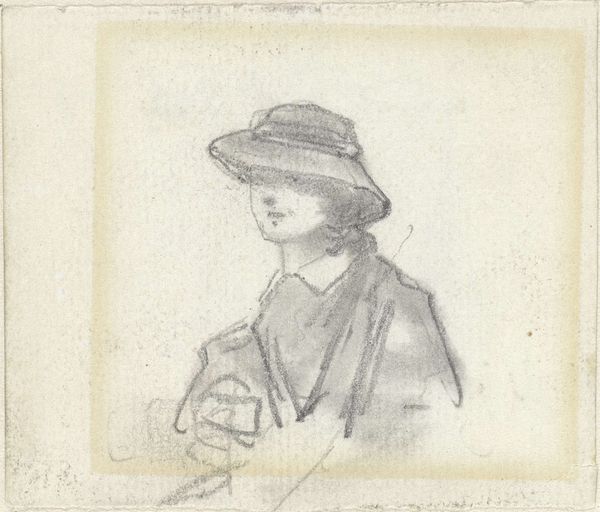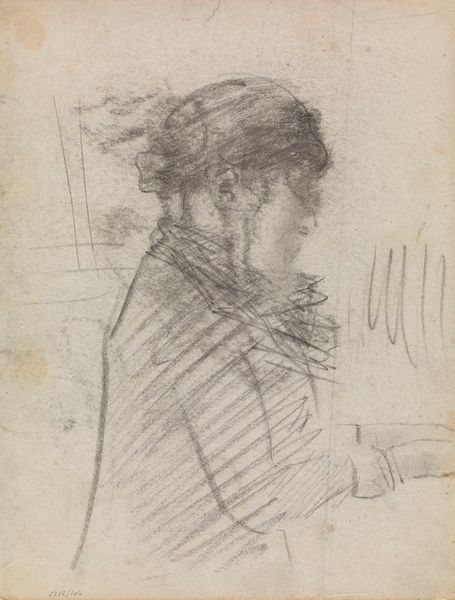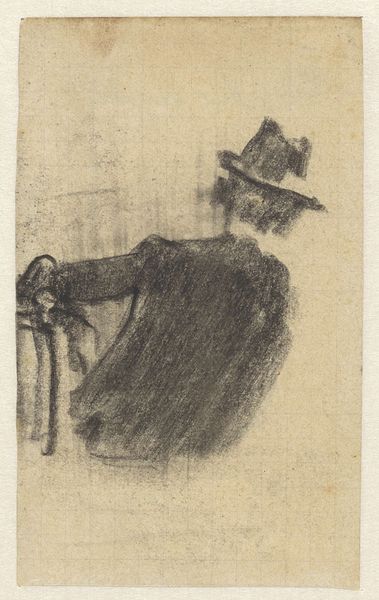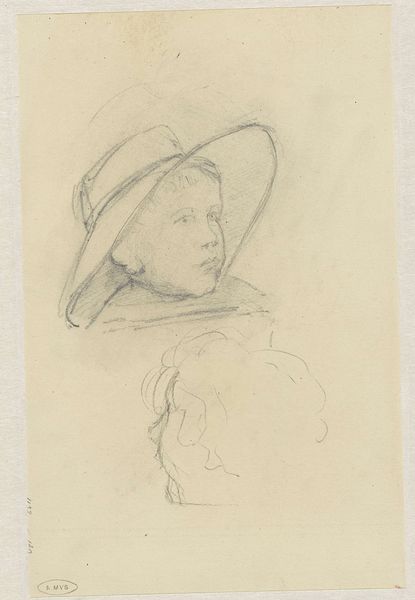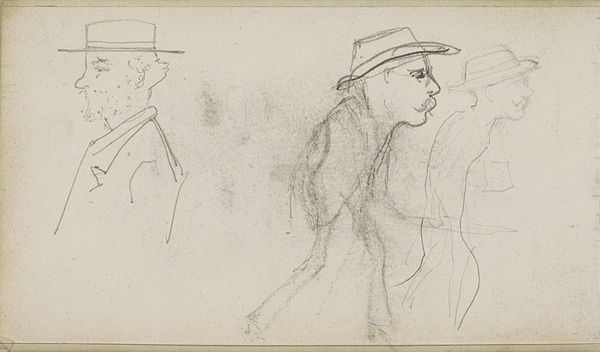
Dimensions: height 187 mm, width 156 mm
Copyright: Rijks Museum: Open Domain
Curator: Before us hangs a pencil drawing on toned paper by Jan Veth, likely executed between 1874 and 1925. The piece is entitled, "Portret van mejuffrouw A.C.E. Veth, zuster van de tekenaar" which translates to “Portrait of Miss A.C.E. Veth, sister of the draughtsman." Editor: The initial impression is striking – the subtle layering of pencil strokes creates a sense of depth, particularly in the rendering of the sitter's hat. The overall muted tones lend an air of quiet introspection to the piece. Curator: Veth was deeply embedded in the artistic and literary circles of the Netherlands. His role as a critic, writer, and artist provided a unique lens through which to examine Dutch society, one concerned with portraying intellectual and bourgeois circles with sensitivity and realism. This image also speaks to the rise of amateur artistic pursuits, which democratized access to art. Editor: Yes, look closer. Notice how the pencil work, while delicate, captures the precise angle of the jaw and the set of her lips. The face in profile is rendered with clear precision. It almost suggests a photographic realism despite its sketchy quality. The hatched lines give a very tactile dimensionality. Curator: Portraits held a particular social function, they reinforced societal hierarchies but also, in a more intimate setting, were keepsakes, or even calling cards. This piece has elements of both the personal and public domains, offering an intriguing insight into Veth's own familial sphere and perhaps even, his affection for his sister. Editor: Consider also how the artist used light and shadow to define the form, adding subtle tonal shifts that give the drawing an atmospheric quality. The slight upturn of the sitter’s lip betrays a sense of composure or, perhaps, restrained humor. Curator: And the subject, we can also consider her positioning as an educated woman of the late 19th and early 20th century, depicted with dignity and a hint of intellect – a reflection of her social standing, but maybe too of a specific trend during the period toward images of "the New Woman." Editor: Thinking of form, the use of line, tone and even paper grain as visual devices to represent depth are all considered aspects to its beauty and merit, apart from who she was and when it was made. A wonderful image. Curator: Absolutely, these details provide depth to a familiar yet striking portrait.
Comments
No comments
Be the first to comment and join the conversation on the ultimate creative platform.

